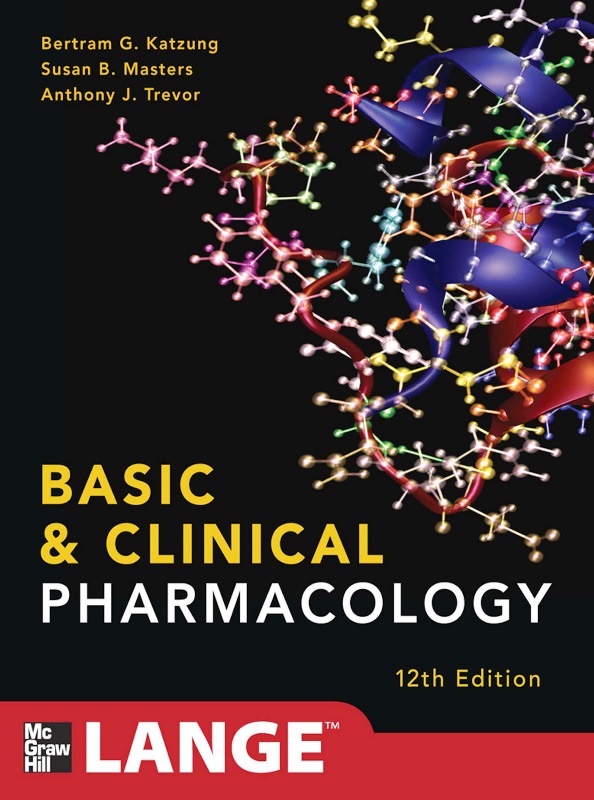Key Features of Basic and Clinical Pharmacology pdf
Secondly, take a quick look at the important key features of Katzung Pharmacology PDF:
- 300+ high-definition full-color illustrations that revive essential pharmaceutical concepts.
- You can view anything from the basics to pharmacology’s clinical application.
- Update: 100 new tables for drugs.
- In tables and boxes, high-performance pharmacology data and pearls are indicated and can be found throughout the entire book.
- Case studies and overview tables are other important features.
Table of contents
Thirdly, here are the 10 sections found in the book, make sure you read through it carefully! Here is the table of contents of
- Values for the basics
- Autonomic Drugs
- Massive cardiovascular drugs
- Smooth Muscle Behavior on drugs
- Drugs that Function in the Central Nervous System Framework
- Drugs with Important Actions on Blood, Inflammation, & gout
- Drugs Endocrines.
- Chemotherapeutic Drugs
- Toxicology
- Unique topics
BASIC PRINCIPLES
- Introduction
- Drug Receptors & Pharmacodynamics
- Pharmacokinetics & Pharmacodynamics: Rational Dosing & the Time Course of Drug Action
- Drug Biotransformation
- Development & Regulation of Drugs
AUTONOMIC DRUGS
- Introduction to Autonomic Pharmacology
- Cholinoceptor-Activating & Cholinesterase-Inhibiting Drugs
- Cholinoceptor-Blocking Drugs
- Adrenoceptor Agonists & Sympathomimetic Drugs
- Adrenoceptor Antagonist Drugs
CARDIOVASCULAR-RENAL DRUGS
- Antihypertensive Agents
- Vasodilators & the Treatment of Angina Pectoris
- Drugs Used in Heart Failure
- Agents Used in Cardiac Arrhythmias
- Diuretic Agents
DRUGS WITH IMPORTANT ACTIONS ON SMOOTH MUSCLE
- Histamine, Serotonin, & the Ergot Alkaloids
- Vasoactive Peptides
- The Eicosanoids: Prostaglandins, Thromboxanes, Leukotrienes, & Related Compounds
- Nitric Oxide 20. Drugs Used in Asthma
DRUGS THAT ACT IN THE CENTRAL NERVOUS SYSTEM
- Introduction to the Pharmacology of CNS Drugs
- Sedative-Hypnotic Drugs
- The Alcohols
- Antiseizure Drugs
- General Anesthetics
- Local Anesthetics
- Skeletal Muscle Relaxants Marieke
- Pharmacologic Management of Parkinsonism & Other Movement Disorders
- Antipsychotic Agents & Lithium
- Antidepressant Agents
- Opioid Analgesics & Antagonists Basbaum,
- Drugs of Abuse
DRUGS USED TO TREAT DISEASES OF THE BLOOD, INFLAMMATION, & GOUT
- Agents Used in Anemias; Hematopoietic Growth Factors
- Drugs Used in Disorders of Coagulation
- Agents Used in Dyslipidemia
- Nonsteroidal Anti-Inflammatory Drugs, Disease-Modifying Antirheumatic Drugs, Nonopioid Analgesics, & Drugs Used in Gout
ENDOCRINE DRUGS
- Hypothalamic & Pituitary Hormones
- Thyroid & Antithyroid Drugs
- Adrenocorticosteroids & Adrenocortical Antagonists
- The Gonadal Hormones & Inhibitors
- Pancreatic Hormones & Antidiabetic Drugs
- Agents That Affect Bone Mineral Homeostasis
CHEMOTHERAPEUTIC DRUGS
- Beta-Lactam & Other Cell Wall- & Membrane-Active Antibiotics
- Tetracyclines, Macrolides, Clindamycin, Chloramphenicol, Streptogramins, & Oxazolidinones
- Aminoglycosides & Spectinomycin
- Sulfonamides, Trimethoprim, & Quinolones
- Antimycobacterial Drugs
- Antifungal Agents
- Antiviral Agents
- Miscellaneous Antimicrobial Agents; Disinfectants, Antiseptics, & Sterilants
- Clinical Use of Antimicrobial Agents
- Antiprotozoal Drugs
- Clinical Pharmacology of the Antihelminthic Drugs
- Cancer Chemotherapy
- Immunopharmacology
TOXICOLOGY
- Introduction to Toxicology: Occupational & Environmental
- Heavy Metal Intoxication & Chelators
- Management of the Poisoned Patient
SPECIAL TOPICS
- Special Aspects of Perinatal & Pediatric Pharmacology
- Special Aspects of Geriatric Pharmacology
- Dermatologic Pharmacology
- Drugs Used in the Treatment of Gastrointestinal Diseases
- Therapeutic & Toxic Potential of Over-the-Counter Agents
- Dietary Supplements & Herbal Medications
- Rational Prescribing & Prescription Writing
- Important Drug Interactions & Their Mechanisms
Appendix: Vaccines, Immune Globulins, & Other Complex Biologic Products
Click on given below button for download pdf book
